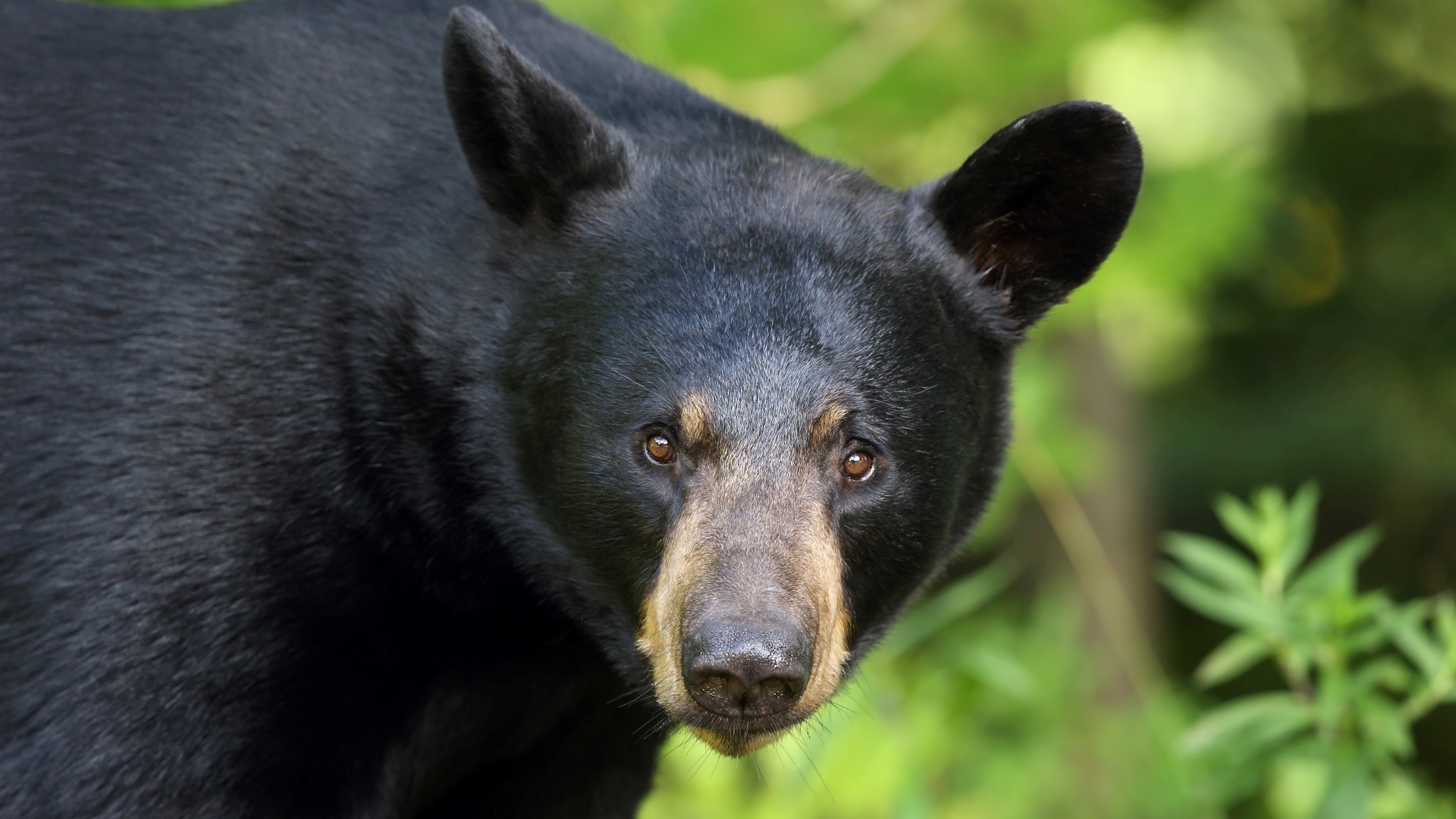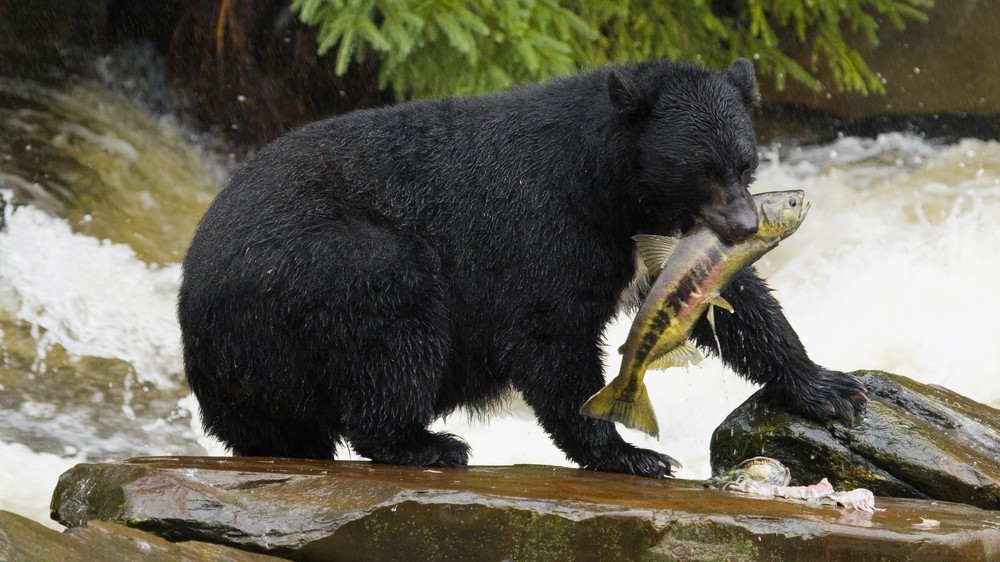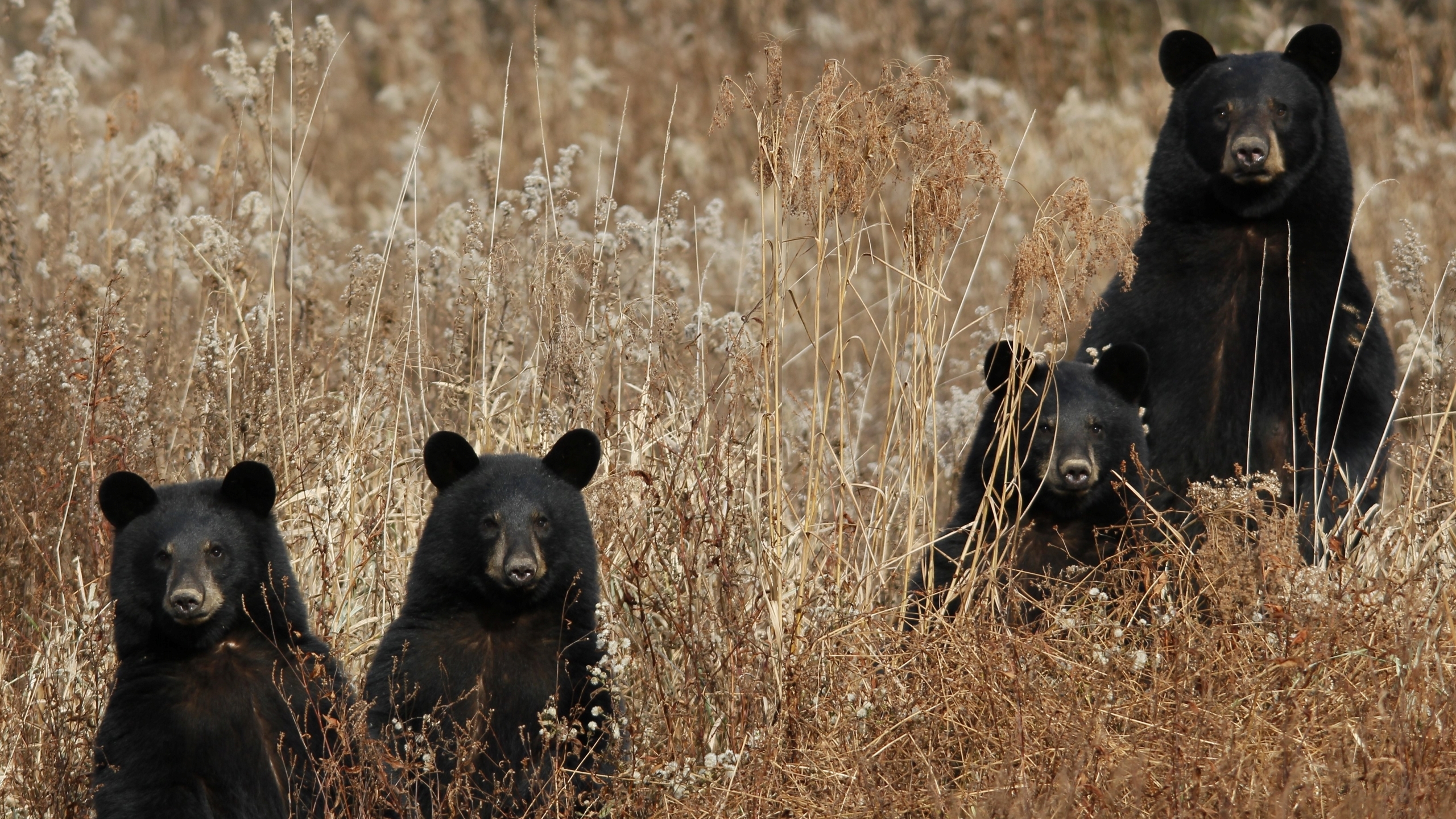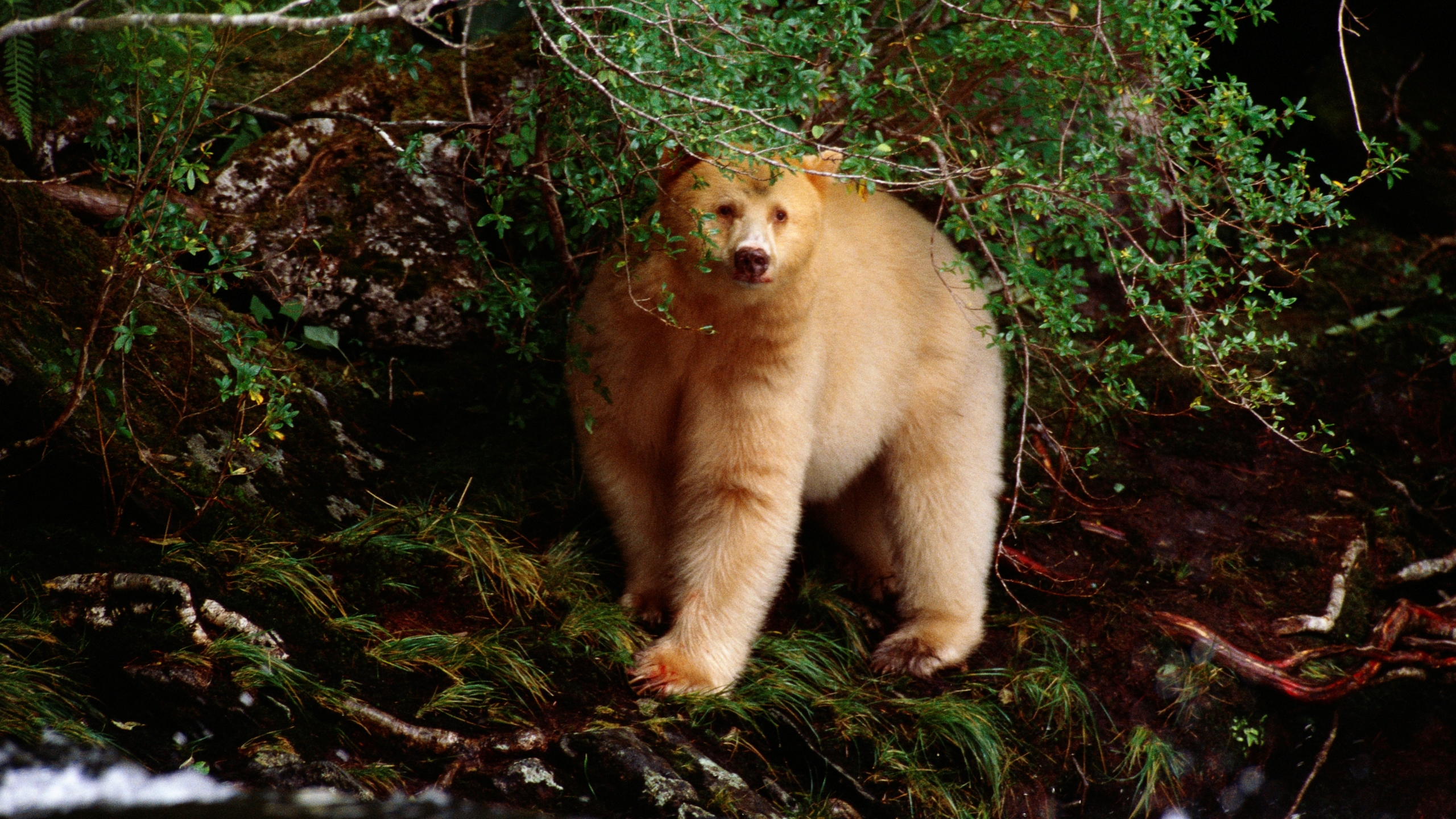Black bears: The most common bear in North America
Black bears can actually be black, brown or white.

American black bears (Ursus americanus), often simply called black bears, are the most common bears in North America. They live in northern Mexico, the U.S. and Canada. Black bears are smaller than brown bears (Ursus arctos) and polar bears (Ursus maritimus), making them the smallest of the three species of bears in North America.
Black bears are excellent climbers and use their curved claws to scale trees and access food, such as nuts and honeycombs. On the ground, they are powerful runners and can reach speeds of up to 35 mph (56 km/h), according to the U.S National Park Service (NPS).
Black bears are usually black, as their name suggests, but their coats may also be brown, cinnamon-colored or even white, according to the International Association for Bear Research and Management (IBA). This coat variation means they're occasionally mistaken for brown bears, especially where the ranges of the two species overlap in the northwest of the U.S. and Canada.
Related: Un-bear-ably cute: Black bear caught napping
How to identify a black bear
Black bears are usually about 3 feet (0.9 meters) tall at the shoulder when standing on all fours, and up to 7 feet (2.1 m) tall when standing upright on two legs, according to the NPS. Brown bears are a bit bigger, typically 3 to 5 feet (0.9 to 1.5 m) tall at the shoulder and almost 9 feet (2.7 m) tall when standing upright.
A black bear's size and weight vary depending on its age and the time of year. Male black bears are up to 60% bigger than females, weighing up to 660 pounds (300 kilograms), while females only reach 175 lbs. (80 kg), according to the IBA. In contrast, male brown bears can weigh up to 860 lbs. (390 kg) and females up to 455 lbs. (205 kg).
Although brown bears are bigger than black bears and usually have lighter-colored coats, the NPS suggests that other characteristics, such as the shape of the bear's body and their tracks, are a more reliable way to identify each species. Black bears do not have a pronounced shoulder hump, and their shoulders are lower than their rump when standing on all fours. Brown bears, on the other hand, have a clear shoulder hump that is higher than their rump.
Get the world’s most fascinating discoveries delivered straight to your inbox.
Size: 3 feet (0.9 meters) tall at the shoulder (all fours)
Life span: Up to 39 years
Conservation status: Least concern
Black bears also have straighter faces than brown bears when viewed from the side, and have taller, more oval-shaped ears, according to the NPS. Their front claws are less than 2 inches (5 centimeters) long and are shorter than brown bear claws, which are 2 to 4 inches (5 to 10 cm) long. Black bear claws are also more curved than brown bear claws and appear in bear tracks less often. Toe prints are more separated and arced in black bear tracks than brown bear tracks, and claw marks are closer to the foot pad (when they are visible).
Where do black bears live?
Black bears range from northern Mexico, through the U.S., to northern Canada. They are found in 32 U.S. states and every province in Canada except Prince Edward Island, according to the IBA. Black bears are usually found in coniferous and deciduous forests, but their broad diet enables them to also use other types of habitat, including open alpine areas, according to The National Wildlife Federation.
Brown bears live in the western region of the black bears' range, including western Canada and U.S. states such as Alaska, Washington and Idaho. Black bears also live so far north that their range overlaps with polar bears along the northern coastlines of Canada, such as in Ontario and Québec, according to the International Union for Conservation of Nature (IUCN).
Are black bears dangerous?
Bears don't normally harm humans and often avoid encounters with people. However, bears occasionally attack to defend their cubs or food, and on extremely rare occasions kill humans to eat them. Seventy-eight people have been killed by black bears in the U.S. and Canada since 1900, compared to 84 killed by brown bears, according to the Florida Museum of Natural History. A 2011 study published in the Journal of Wildlife Management found that most fatal black bear attacks are caused by predatory male black bears. Predatory attacks occur when a bear attacks a human they see as prey.
Related: Hiking in bear country? How to prevent an attack
The NPS recommends that people keep their distance from wild bears and avoid surprising them. If attacked by a black bear, a victim should fight back. Playing dead doesn't fool black bears (although it might work with brown bears), so if a victim is unable to escape to a car or another secure location, they should use whatever objects are available and strike the bear in its face and muzzle.
What do black bears eat?
Black bears are omnivores and eat both plants and animals, with a wide diet that varies depending on their location and the time of year. Most of their diet is made up of insects, nuts, berries, grasses and other vegetation, according to the IBA.
Black bears are not active predators and only hunt when an opportunity for prey presents itself. Most of the vertebrates they eat are already dead, according to the University of Michigan's Animal Diversity Web (ADW). If they do decide to hunt, black bears will go after young, hoofed mammals, such as elk, moose and other deer species, according to The National Wildlife Federation. Black bears in Canada and Alaska also feed on salmon.
Breeding and hibernation
Black bears are usually solitary except for the breeding season and when a female is raising her cubs, according to the Kentucky Department of Fish & Wildlife Resources. Males will seek out females for mating during the breeding season in June and July. Once she's mated, a female black bear's fertilized eggs won't enter her uterus until the autumn, in a process called delayed implantation, according to ADW. This delay, followed by a 220-day gestation period, allows females to give birth in their winter dens, typically during hibernation.
Bears usually fatten up in late summer and fall as they prepare to hibernate through the winter months, from about November to March. They may feed for up to 20 hours, consuming up to 20,000 calories per day during this period, according to the Pennsylvania Game Commission.
Black bears create their dens in the ground, under a windfall or in a hollow tree or cave, or use a previously occupied animal den, according to the NPS. The hibernation length varies across the black bears' range. Black bears in Mexico, for example, may not need to hibernate at all as the climate is mild and food remains available through winter. In contrast, black bears living in the colder environment of northern Alaska hibernate for about 7 months, according to Alaska Department of Fish and Game.
During hibernation, black bears lower their body temperature and heart rate and suppress their metabolism by 75% to reduce their energy needs, Live Science previously reported. They survive off fat reserves built up in late summer and fall but maintain much of their muscle mass so they don't become weak.
Female black bears typically give birth to two or three offspring in February during hibernation. Baby black bears, called cubs, weigh just 7 to 11 ounces (200 to 310 grams) at birth, according to the Arizona-Sonora Desert Museum. Black bear cubs stay in the den with their mothers until spring. The cubs are weaned before they reach 8 months old, but they won't leave their mothers until they are about 17 months old, after hibernating with her during their second winter, according to ADW.
Black bears can live more than 30 years in the wild. The oldest black bear on record was a female in Minnesota that reached 39, according to the Florida Fish and Wildlife Conservation Commission (FWC). However, most black bears only live to be about 10 years old and die well short of their maximum lifespan, according to ADW. The main causes of death for adult black bears are vehicle collisions, hunting and starvation due to a lack of available food, according to the Florida Fish and Wildlife Conservation Commission.
Types of black bear
American black bears only live in North America. Black bears in Asia are called Asiatic black bears (Ursus thibetanus), or moon bears, and are a separate species from American black bears.
Kingdom: Animalia
Phylum: Chordata
Class: Mammalia
Order: Carnivora
Family: Ursidae
Genus & species: Ursus americanus
Source: ITIS
The Integrated Taxonomic Information System (ITIS) recognizes 16 different subspecies of American black bear, often named after the parts of North America they inhabit. For example, there are Florida black bears (Ursus americanus floridanus) and California black bears (Ursus americanus californiensis), although these bears are not just confined to these states. Cinnamon bears (Ursus americanus cinnamomum) get their name because they often have cinnamon-colored coats.
kermode bears or spirit bears
Kermode bears (Ursus americanus kermodei) are a subspecies of black bear in British Columbia, Canada that are sometimes white. White Kermode bears are also known as spirit bears, although they are part of the Kermode population and are not a separate subspecies. The highest concentration of spirit bears is found on Gribbell Island, off the north coast of British Columbia, where one-third of the black bears on the island are born white, according to The National Wildlife Federation.
Spirit bears' white coats are caused by a mutation in a gene called mc1r. The gene is recessive, which means a bear cub will only be white if both of its parents carry the gene, according to The National Wildlife Federation. If only one parent carries the recessive gene then the cub will have a normal, black coat.
A 2009 study published in the Biological Journal of the Linnean Society found that white black bears are better at catching salmon than normal black bears during the day. This could be because the fish find it harder to see the white bears overhead as lighter coats blend in better with a bright sky background than black coats.
Conservation status
American black bears are not endangered and are categorized as a species of least concern on the IUCN Red List of Threatened Species, which means the species is at low risk of extinction. The black bear population is estimated to be twice as large as all other bear populations around the world combined. In fact, while many bear species are in decline, such as Asiatic black bears, the American black bear population is increasing, overall.
Related: Real-life 'teddy bear' is no longer endangered
However, black bears are threatened in some parts of their range. Black bears are considered nationally endangered in Mexico due to deforestation, hunting and other human activities. Hunting black bears was banned in Mexico in 1985, and the population is now recovering and expanding thanks to conservation efforts, according to the IUCN.
Bears are regularly hunted and killed in the U.S. and Canada, but this is controlled and managed by state and provincial agencies. Other common threats to bears include residential and commercial development, agriculture, road building and high traffic densities.
Additional resources
- The IUCN Red List of Threatened Species website has a map showing where black bears live.
- Book: "Bear Attacks: Their Causes and Avoidance" (Lyons Press, 2018). Available to buy at Amazon.
- The Royal BC Museum website offers more information on Kermode spirit bears.

Patrick Pester is the trending news writer at Live Science. His work has appeared on other science websites, such as BBC Science Focus and Scientific American. Patrick retrained as a journalist after spending his early career working in zoos and wildlife conservation. He was awarded the Master's Excellence Scholarship to study at Cardiff University where he completed a master's degree in international journalism. He also has a second master's degree in biodiversity, evolution and conservation in action from Middlesex University London. When he isn't writing news, Patrick investigates the sale of human remains.



